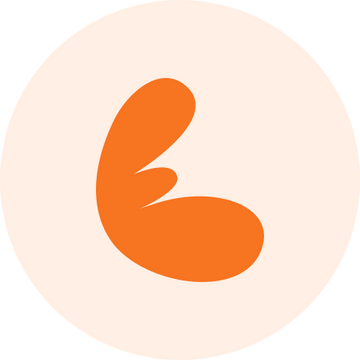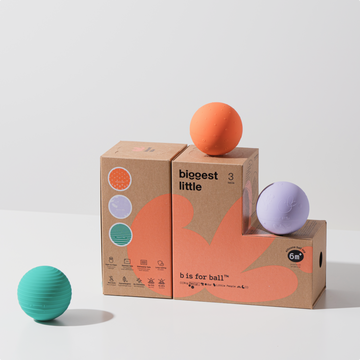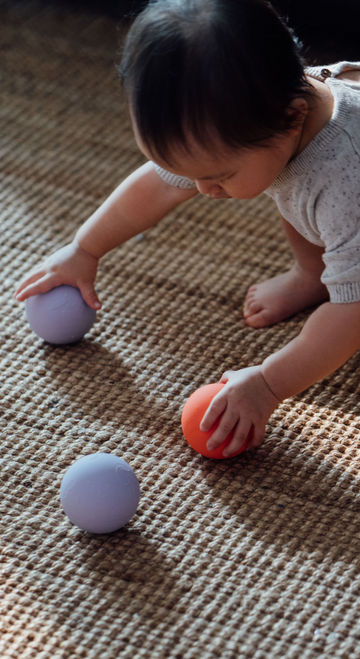
Dexterity, Coordination, and Motor Skills Toy
Dexterity plays a pivotal role in a child's ability to interact with the world. The b is for ball® toy is specifically designed to nurture fine motor skills and hand-eye coordination. From grasping to manipulating objects, b is for ball™ challenges little ones in the most delightful ways, encouraging them to reach, twist, and turn. With each play session, they're not just having fun—they're laying the groundwork for essential skills like writing, buttoning, and tying their shoes in the future.
Motor Skills and Hand-Eye Coordination Toy
Motor skills are vital for your baby's overall development. b is for ball® is a motor skill toy for babies and toddlers. It's designed to encourage movement, balance, and coordination. b is for ball® invites your child to reach, grasp, push, and pull, setting the foundation for future physical development. It's not just a ball, it's a tool to help your baby achieve important developmental milestones, all while having a great time!
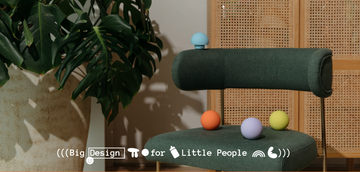
When do babies develop hand eye coordination?
Babies start developing hand-eye coordination around 3-4 months old when they begin tracking moving objects with their eyes and attempting to reach for them. This skill is further refined between 4-6 months, as they start to successfully grasp items. By 9-12 months, most babies can accurately reach for and pick up objects, and by 18-24 months, they can perform more precise actions like building a block tower or turning pages in a book. However, hand-eye coordination continues to improve throughout early childhood. Keep in mind, individual development varies among infants.
How to improve my baby's motor skills?
To improve baby motor skills, engage them in activities that encourage movement and coordination. Provide toys that need grasping, pushing, or pulling. Play games that involve reaching, crawling, or walking. Encourage safe exploration of their surroundings and offer diverse textures and shapes to handle. Regular, playful interaction and encouragement are key to enhancing their physical development.
When do babies develop fine motor skills?
Babies begin developing fine motor skills in their first year of life, starting with simple reflexes and evolving to more precise and intentional movements. By 3-6 months, they start grasping objects, and by 6-12 months, they improve in hand-eye coordination, reaching for and holding items. More intricate skills like pinching or scribbling emerge around 12-24 months. Each child is unique, so timelines can vary.
What are tactile toys?
Tactile toys are designed to stimulate a child's sense of touch and are often characterized by various textures, shapes, and materials. They encourage children to explore and understand the world around them through physical sensation, helping to develop fine motor skills, hand-eye coordination, and sensory processing. These toys are particularly beneficial for children who have sensory processing disorders, as they provide the necessary sensory input and can help improve focus and calmness.
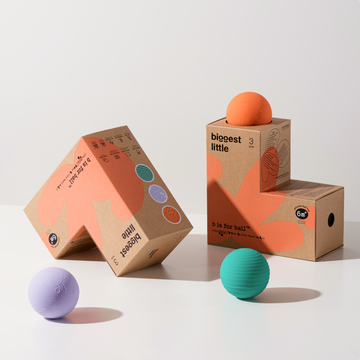
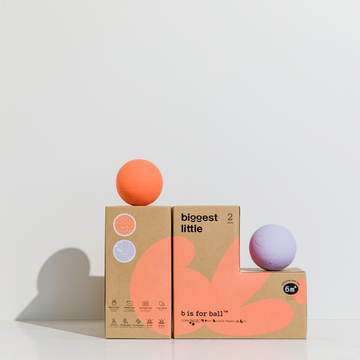
At Biggest Little, we're passionate about quality, design, and most importantly, family
That's why we're dedicated to designing products that bring happiness to every home and help foster greater love and togetherness for the whole family. We know firsthand how special those moments of play can be, and we want to help other families experience that same joy.
We're beyond excited to be launching our first product, and we can't wait to share it with you and your family. We truly believe that our products will help bring families closer together and make playtime even more special. So, from our family to yours, thank you for choosing biggest little® – we can't wait to be a part of your family's playtime memories.


